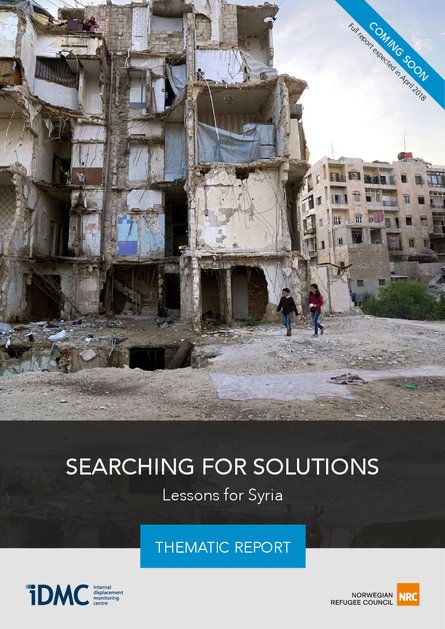
Since the outbreak of conflict in Syria in 2011, close to half the country’s pre-war population has been displaced. According to the IASC framework on durable solutions for internally displaced persons, “a durable solution is achieved when internally displaced persons no longer have any specific assistance and protection needs that are linked to their displacement and can enjoy their human rights without discrimination on account of their displacement.”
In Syria, sustained efforts from humanitarian and development actors will be needed in order to work towards meeting these benchmarks. As made painfully apparent by the ongoing bombardment of Eastern Ghouta and other areas, the country remains far from safe; explosive hazards contamination put the physical safety of those who return at very real risk. Widespread destruction of housing means that many IDPs will be unable to return to their former homes, while damaged infrastructure and curtailed services undermine people’s ability to fulfil their basic rights. Loss of documentation during displacement further limits Syrians’ ability to access necessary services.
In order to facilitate progress towards durable solutions for displaced populations in Syria, this review identifies lessons learned from other complex crises to inform future programming. The literature review examined pathways towards durable solutions for IDPs in Iraq, Colombia, Sri Lanka, Bosnia, and Kosovo to draw relevant parallels and lessons learned for Syria, with recommendations for operational actors working with displacement-affected communities.